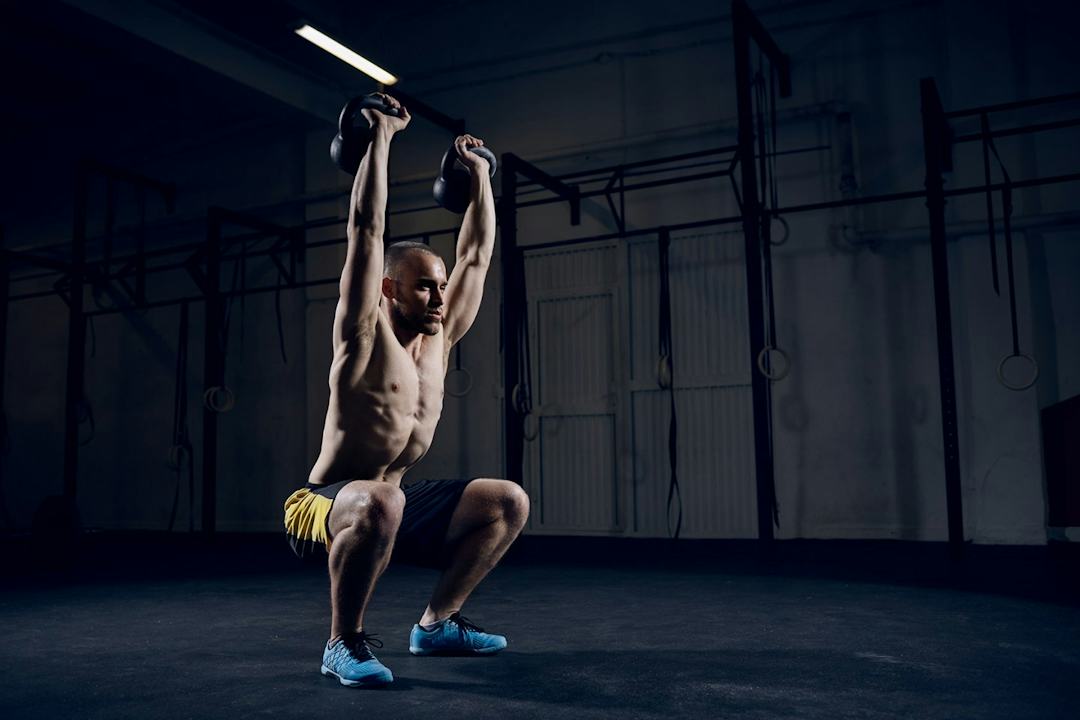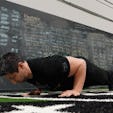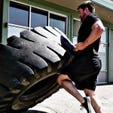Balance Exercises? I know, you are probably picturing some anorexic contortionist kid who works for Cirque du Sole` jumping and balancing on exercise balls.
Before you send this article to the trash, hear me out. I completely understand that to lift big weights, at some point you have to train with big weights.
As a kid, this was my mantra. Hitting a set of 10 reps of anything was like running a marathon and if I saw a guy training biceps, he forever was a pansy in my eyes.
Don’t even get me started on selfie ab shots! Over the years, however, my body has seen some mileage.
How I Began to Value Balance Exercises
High school wrestling gave me a reconstructed knee and a severely torn hamstring; Powerlifting, a loose shoulder capsule, torn pec, and a back that acts up periodically; and Sport Judo, a torn ACL in my “good” knee.
So, what’s point of all of this? Well, in the last few years I have learned that if you take care of your body, stay out of the emergency room, and train intelligently, you will most likely see better long-term gains in addition to staying injury free.
As part of a General Preparation Phase (GPP), which I frequently skipped in my high school and college years, I have been spending 3-4 weeks at the beginning of every macro-cycle working on structural deficiencies and technique.
Believe me, this is extremely difficult for a guy that loves to train heavy. In doing this, however, I have discovered that I am able to strengthen the small weak links, such as the rotator cuff, that will otherwise bite me in the ass later in my cycle.
Incorporating Balance Exercises With General Physical Preparedness
By focusing on balance exercises during the General Physical Preparedness Phase, I have been not only deconstructing my technique in basic lifts such as the bench, squat, deadlift, kettlebell snatches and cleans, etc…, I have also been working on joint stability, abdominal strength, and postural imbalances.
Heavy weight will come in later phases. The purpose of this phase is to get rid of any weak links. This phase consists of lots of ab and trunk work, such as hip bridges, hanging leg raises, and lots of mace and Indian club work. I will also perform light plyometrics such as box jumps with 5 second bent-knee pauses at the top and bottom of each rep.
For the main lifting component of each training session, I will slow the workout down with longer 2-3 minute rest periods and try to perform exercises on unstable surfaces such as loose sand whenever possible.
I will incorporate exercises such as the bottoms-up press and one-stays-up kettlebell press overhead seated on a stability ball for the shoulders and on the floor for the chest.
Multi-directional lunges holding kettlebells overhead are also great options for legs, in addition to double kettlebell snatches into back lunges for total-body work. Reps are high at 15-20, performing a set or two for each exercise.
I try not to train much over an hour, as my goal is not to add mass, but to work on neuromuscular stabilization. I know, this sounds like an advertisement for one of those companies that sells the cheap, crappy, imported balls and bands and tells you it’s what all the big guys use. I promise, it is not.
10 Balance Exercises to Increase Strength and Power
Some potential GPP balance exercises to add to your arsenal might look like this:
1. Hindu push-ups with varying hand and foot positions – 1 x 20.
2. Single kettlebell bottoms-up presses seated on stability ball – 1 x 10-15 each side.
3. Double one-stays-up standing bottoms-up press – alternate for 20.
4. Kettlebell cleans and snatches in loose sand – 1 x 20 each side.
5. Close-stance overhead steel mace 360 exercise – 1 x 20 each direction.
6. Steel Mace grave diggers-1 x 20 each direction.
7. Steel Mace trunk twists-1 x 20 each side.
8. Indian club work: Inward circles, outward circles, etc…. for time.
9. Multidirectional lunges with one or two kettlebells overhead-1×10-15 alternate for 20 Walking two-handed swings-for distance.
10. Sandbag training: dead lifts, swings, overhead swings, shouldering, overhead squats, overhead presses, etc…to moderate fatigue.
So, what do you get out of all of this other than the gym nickname of “Powder-puff” and a pink skirt stuffed in your locker? How about stronger, more stable joints, better control in the bottom of your lifts, reduced incidence of injury, and bigger overall gains.
Remember, this is only for a month or less, 2-4 times a year, depending upon the length of your regular training cycles. It will also better prepare your connective tissue for the next hypertrophy or strength phase in your training program.
You are still lifting for strength and power, and certainly most of your time should be spent in this part of the intensity/volume spectrum, but adding balance exercises to your GPP phase will pay huge dividends later in your cycle.



)





